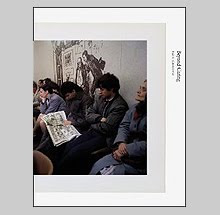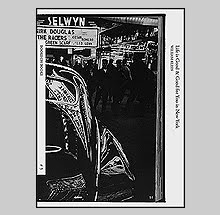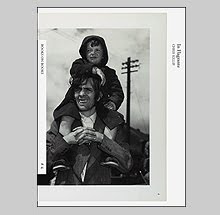Desperate Cars by Sebastien Girard

The invention of automobiles and the invention of photography both promised a new engagement with the larger world. As gasoline powered engines and shutter driven cameras proliferated, the 'far from home' suddenly became visible. Photographers embraced autos and their presence has often become a breeding ground for meaning. From Lartigue's early car pictures which feel futuristic and offer the promise of adventure to Robert Frank's images of the car as rolling isolation booths. Cars have represented a multitude of themes from wealth and elegance to violence and rampant ecological destruction. One of my favorite titles from 2010, Sebastien Girard's Desperate Cars takes a look at the autos around his suburban neighborhood in Toulouse, France.
There is little text at all in Desperate Cars, Girard opens with endpapers which plea 'Save Their Souls' - and follows with a concentration on the small damage and wear. Some have rolled in piss and shit; others have had their rear view mirrors smashed off; one has its bumper held on by bungee cords. It is all pretty minor - smashed windows and such - so one might ask 'who cares?'
Other photographers have done major work on vehicles that have killed their passengers and have been twisted into shapes unrecognizable. My interest in Girard's approach extends to what I see as one of photography's flaws. There is a tendency to look to extremes and I find it a much more interesting problem to look at the subtle and make it hold your attention. I have in the past written about how I perceived Raphel Waldner's work and I do find the descriptions seductive but this work seduces me in a much more nuanced way, for instance, Girard has chosen to describe his subject in the dark and from the same distance. Throughout Desperate Cars, the scale of the objects described are almost all similar. There is no medium shot or master shot etc - they are all close-ups. This unique strategy makes the book fell like you are revolving around the vehicles - navigating not so much a photograph, but navigating around an object. He sequenced these images with a flair for great pairings that complement the content and formal play as well.
As for the chips and bumps versus the great seven car pile-up fatality covered in crash-dust, this work is more about the wear of life rather than the moment of death. It is less common to die in a car crash than to have life simply chip away at you, like water does to stone overtime. These cars wear their damage like we wear our appendix scars.
Desperate Cars was self-published in an edition of 500. The quality is near perfect from the printing to the hand binding done by Van Waarden in the Netherlands. A signed and numbered limited edition with a print is also available. Sebastien Girard will be presenting his books and work at this year's International Photobook Festival in Kassel Germany from June 1-5th at Documenta-Halle.












